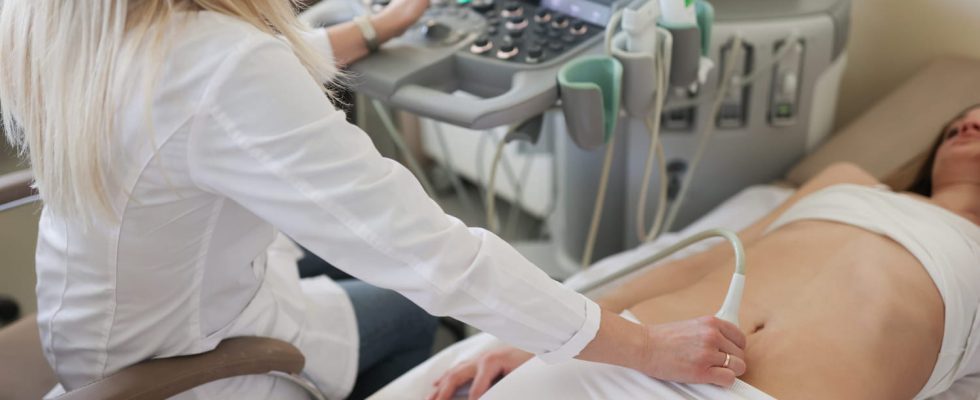The biopsy of the throphoblast is an early diagnosis tool which makes it possible to detect chromosomal anomalies, which concern the chromosomes, and genetic anomalies, which concern the genes. How is this exam conducted? We take stock.
There biopsy trophoblast is one of the examinations that may be offered to future parents in the event of suspicion of a genetic or chromosomal abnormality. What is the trophoblast? What are the differences with amniocentesis? Is it painful? Insight from Dr Caroline Verhaeghe, obstetrician-gynecologist.
What is the trophoblast?
The trophoblast is the tissue that surrounds the amniotic sac and the fetus. It will become the placenta after the first trimester of pregnancy. Trophoblast biopsy, also called choriocentesis, is a painless test that involves removing trophoblast cells called chorionic villi, using a needle attached to a syringe.
“The doctor will perform back and forth movements through the future mother’s belly to aspirate the chorionic villi, under ultrasound control. These cells have the same genetic characteristics as those of the fetus, which makes it possible to detect a genetic or hereditary abnormality“says Dr Caroline Verhaeghe.
When is a trophoblast biopsy performed?
Trophoblast biopsy can be proposed, never imposed, in case of genetic disease in the familysearch for a gene or suspicion of trisomy 21 during the first trimester ultrasound.
When to do a trophoblast biopsy?
Trophoblast biopsy is usually performed between 11 and 14 weeks of amenorrhea, i.e. between the 9th and 12th week of pregnancy.
Trophoblast biopsy or amniocentesis, what are the differences?
Amniocentesis is a test that involves removing amniotic fluid while the biopsy of the trophoblast aims to remove a fragment of chorion which will become the placenta. “Unlike trophoblast biopsy, amniocentesis is not an early diagnostic tool.“, remarks the obstetrician-gynecologist. On the other hand, these two examinations have the same objective: to learn more about the genetic heritage of the fetus in order to be able to detect any anomalies.
Is trophoblast biopsy painful?
The trophoblast biopsy is not painful but may not be very pleasant. “This is the reason why local anesthesia is performed at the puncture site. In addition, the examination is completely painless for the baby because the puncture is done at a distance”, reassures the specialist. In other words, it is an examination that is more impressive than painful.
When can we know the results?
The results are generally transmitted in two stages. A simple karyotype is obtained in 48 hours to a few days. The final result is known within a maximum of three weeks, depending on the anomaly sought.
Is it reliable?
The benefit of trophoblast biopsy is to provide an early and reliable diagnostic result. However, the earlier the diagnosis, the more it is possible to act quickly.
Should I rest after a trophoblast biopsy?
It is recommended to observe a rest period of 24 to 48 hours because feelings of tightness or pain in the lower abdomen may occur. Furthermore, this examination is also psychologically stressful.
Thanks to Dr Caroline Verhaeghe, obstetrician gynecologist
